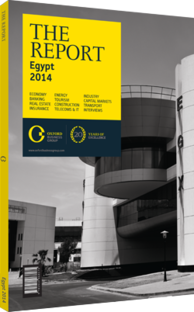A new index for SMEs should generate more interest and help to unlock potential
The performance of the Nile Stock Exchange (NILEX) over 2013 and into 2014 suggests that it has broken through the inertia that plagues many new secondary boards in stock exchanges. Established in 2010 as a sub-market for mid- and small-cap firms wishing to access liquidity through the exchange, the NILEX had to contend in its first year of business with low trading values and volumes – not only as a result of the traditional lack of interest by investors in smaller-cap boards but also the 2011 revolution.
By 2012, however, the board was beginning to show some signs of life, with trading volumes growing from 31m to 81m traded securities. In 2013 real momentum came: trading volumes leapt to more than double their 2012 levels to reach 254m, while values surged to around LE748m ($106.22m), compared to LE247m ($35.07m) in the previous year.
Moreover, five new companies have listed on the NILEX in 2013, bringing the total number of listed companies to 24. While a measure of this improved performance can be partly attributed to growth enjoyed by the main market rebounding, much of it is also the result of the EGX’s decision to drive the growth of the NILEX through regulatory reform and promotion, as well as better implementation.
Regulation
This process began in late 2011, when the NILEX removed the minimum capital requirement of LE500,000 ($71,000) for firms wishing to list, but the regulatory change to which the EGX attributes the recent rise in activity is an alteration to trading hours. The change took place in the second half of 2013, and brought the NILEX into line with the main board by allowing for trading over a four-hour daily period. Another effort to boost activity on the new board came in early 2014 with the introduction of a Nile Index, which brings a further degree of harmony between the EGX’s two boards.
Like the EGX 30, the Nile Index is a model of market capitalisation adjusted by free float, but it differs in that it includes only the most active firms in terms of value. It also excludes companies with a free float of less than 10%, those that have any record of violating disclosure regulations more than three times and any company that has recorded a loss for three consecutive years. The number of companies that make up the new index, therefore, may vary according to the number of firms listed on the NILEX that meet the criteria.
Spreading The Message
With the regulatory and procedural changes already paying dividends, the EGX is seeking to drum up even more interest in the NILEX among both potential listings and investors. After the turbulence in the wake of the 2011 revolution prompted a pause in marketing the new board, outreach efforts began again in earnest as early as May 2012, when exchange officials met with businesses and investors in the governorate of Sohag in Upper Egypt. This formed one of an ongoing series of meetings between the exchange and the business community, including chambers of commerce, in which the benefits of listing on the NILEX in terms of funding and company profile are elucidated.
In 2014 the scope of this effort was increased to include international investors when Mohamed Omran, the chairman of EGX, used the MEDA Finance conference, which was attended by a number of international investment firms, as well as the EU delegation in Egypt, to urge global investors to take ownership stakes in small and medium-sized enterprises in Egypt via the NILEX.
The event provided the EGX with an opportunity to highlight the robust performance of the exchange during 2013 and its continuation into 2014. “The good news is that the turnover ratio is around 100%, which is four times the ratio for the big market; this is an indication of how investors are receiving the changes happening inside the stock exchange,” Omran said. If the momentum seen over the course of 2014 is maintained, the task of attracting more investors to the NILEX should become much easier.
You have reached the limit of premium articles you can view for free.
Choose from the options below to purchase print or digital editions of our Reports. You can also purchase a website subscription giving you unlimited access to all of our Reports online for 12 months.
If you have already purchased this Report or have a website subscription, please login to continue.

